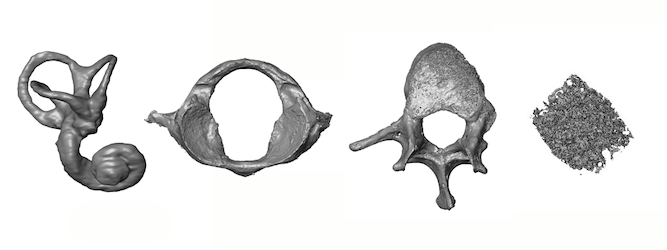How did our ancestors and their relatives move in their environment? How much time did Australopithecus spend in trees? How did the locomotor behavior of Paranthropus differ from that of the first humans? Besides the fact that there are few postcranial remains directly associated to cranial remains that could be taxonomically identified, functional signals provided by the study of partial postcranial remains could only partially address these fundamental questions. In this context, I am developing a research project that combines the study of key cranial (i.e., the inner ear) and postcranial (i.e., the vertebral column) structures which play pivotal role in vertebrate locomotor behavior.

- “Little Foot” is the most complete Australopithecus skeleton yet found and one of the oldest evidence of human evolution in South Africa. We described the shape of the bony labyrinth of “Little Foot” and discussed implications for early hominin paleobiology and evolution (link).
- Our comparative study of the inner ear of Plio-Pleistocene hominin specimens from the “Cradle of Humankind” revealed features that are specific to Paranthropus. To explore further these specificities and, overall, the variation patterns within this taxon, I described and analyzed the inner ear of a Paranthropus specimen from the site of Drimolen (link).
- The first cervical vertebra (or atlas) plays a crucial role in vertebrate biology. The virtual reconstruction of the most complete Australopithecus first cervical vertebra yet discovered, yielded from the “Little Foot” skeleton, provides exceptional insights into the past life of Australopithecus more than 3 million years ago in Africa (link).
![]()
We are developing a “Sterkfontein project” on MorphoSource. 3D surfaces of fossil specimens are available online (link).